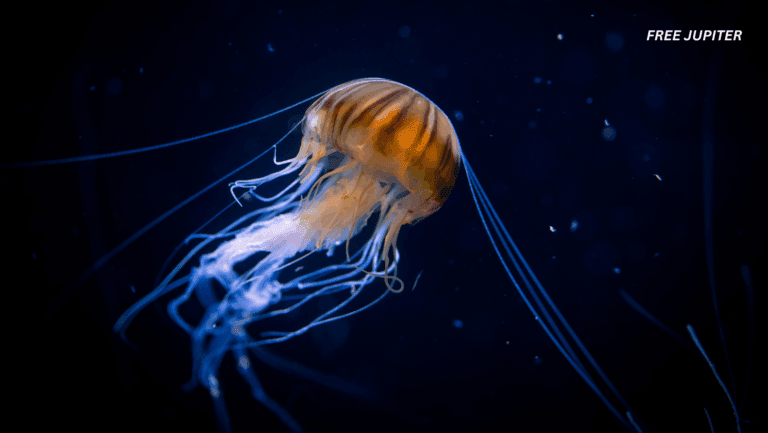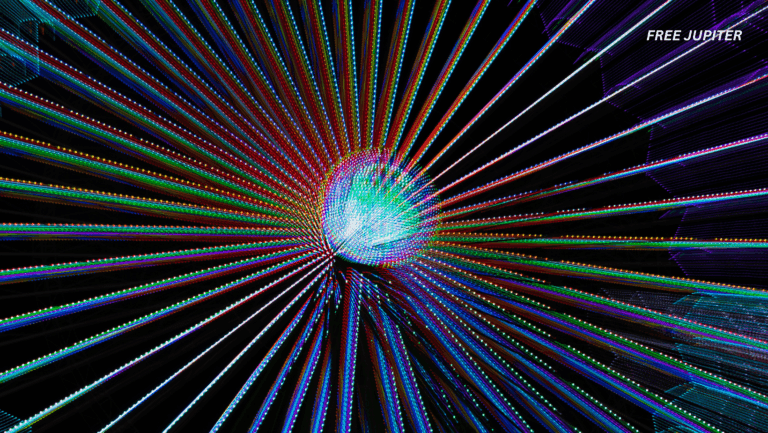Friendly Note: FreeJupiter.com shares general info for curious minds 🌟 Please fact-check all claims—and always check health matters with a professional 💙
Every year, millions of birds pull off one of nature’s greatest stunts: traveling thousands of kilometers to migrate—sometimes across continents or even oceans—without getting lost. Tiny songbirds, giant geese, and elegant shorebirds all seem to know exactly where they’re going, even if they’ve never made the journey before.
For a long time, scientists assumed birds must be tapping into Earth’s magnetic field, using it as an invisible map to guide them. But here’s the catch: nobody could figure out how. It’s not like they’re flying around with tiny GPS units or magnets in their beaks. So… what’s going on?
Well, things just got quantum weird.
Birds Might Be Seeing Something We Can’t
Recent research suggests that birds don’t just sense the magnetic field—they might actually see it. Not like a compass needle or glowing neon signs pointing north, but more like faint patterns or shading overlaid on their regular vision, giving them a built-in directional hint.
And the truly wild part? This whole system seems to rely on the quirky, hard-to-wrap-your-head-around world of quantum physics.
The Magic Starts in the Eyes
At the center of this mystery are special proteins tucked inside birds’ eyes. These light-sensitive molecules are called cryptochromes. When blue light hits them (think early morning or daytime light), they react in a very unusual way.
This reaction forms what’s known as a radical pair—essentially, two connected molecules that share a strange bond. These aren’t your everyday chemical reactions; these molecules are quantum-sensitive and super short-lived, reacting to even the tiniest changes in magnetic fields.
And here’s where things get truly science fiction-y: the molecules in a radical pair are quantum entangled.
Read more: Scientists Reveal The Oldest Rocks Ever Found on Planet Earth
Wait… Quantum Entanglement? In a Bird?
Yep. Quantum entanglement—Einstein’s famous “spooky action at a distance”—isn’t just some abstract physics lecture. It might actually be happening in birds’ eyeballs.
Entanglement means that the fate of one particle is linked to another, no matter how far apart they are. In the case of the bird’s cryptochromes, this entanglement helps the radical pair act as a kind of quantum compass.
When light hits the bird’s eye, these proteins respond differently depending on the angle of Earth’s magnetic field. This could create shifting patterns or shadows that appear in their vision—giving birds a sort of magnetic “sixth sense” that lets them know which way is north (or south, or wherever they need to go).
And because this trick only works in the presence of light, birds mostly use it during the day—or when there’s just enough light to kickstart the reaction.
Quantum Entanglement: The Spooky Connection Between Particles
Imagine two twins who, no matter how far apart they wander, always know what the other is feeling—instantly. That’s essentially what quantum entanglement is, but instead of people, it happens with tiny particles like electrons or photons. Even Albert Einstein called it “spooky action at a distance.” And yes, it’s real.
What on Earth Is Quantum Entanglement?
At its core, entanglement is about two (or more) particles forming a super‑special, shared existence. When particles are entangled, their properties are intertwined. Measure a property (like spin or polarization) of one particle, and the other one instantly shows a matching—or opposite—value, regardless of the distance between them.
If you measured one entangled electron and found it spinning up, its partner, whether inches or light-years away, would immediately spin down.
How Do Particles Become Entangled?
- Shared Origin: Two particles springing from the same event (like a decaying atom or a beam splitter) can instantly become entangled.
- Physical Interaction: When particles interact under very controlled lab conditions, they can emerge entangled.
- Quantum Logic Gates: In quantum computers, specific operations deliberately entangle particles to perform certain calculations.
Why It’s So Bizarre—and What It Says About the Universe
- Instantaneous connections: This next-point effect isn’t about sending signals faster than light—it doesn’t violate Einstein’s cosmic speed limit—but it does mean the universe is stranger than classical science lets on.
- No secret properties: Contrary to what Einstein liked to believe—namely, that particles had hidden values waiting to be revealed—experiments consistently show they don’t. Reality only becomes “real” when we measure it.
- Weird Reality: Entanglement challenges our intuitive sense of separate, independent objects. At the quantum level, the universe is deeply interconnected.
Where Entanglement Actually Helps Us
- Quantum Computing: Entanglement is essential to the power of quantum computers. It allows multiple particles to represent and process information in ways far beyond classical bits.
- Quantum Cryptography: A super-secure way to send messages. Any eavesdropping attempt disrupts entanglement, immediately alerting the communicators.
- Quantum Teleportation: Yes, this is real—but it’s not Star Trek teleportation of matter. Instead, it’s a way of transferring information about a particle’s state using entanglement (plus a bit of classical communication).
- Fundamental Science: Understanding entanglement helps physicists explore how gravity, space, and time might emerge from quantum origins.
Read more: AI Brain-Computer Interface Allows Paralyzed Man to Speak and Even Sing Again
Biology Just Got a Quantum Upgrade
This discovery pushes the boundaries of what we thought living organisms could do. Quantum entanglement inside a living animal? That’s not just a clever headline—it’s likely real.
And it’s not only birds that may have this superpower. Other animals—possibly turtles, bees, or even dogs—might be tapping into magnetic fields, too. There’s even the tiniest chance humans have this ability in some form, though it’s probably far less developed (and, let’s face it, most of us can barely navigate our own kitchen without GPS).
Scientists are now working to understand exactly how this quantum compass works on a molecular level. If we can crack the code, we might unlock clues to other biological mysteries—and even inspire new technologies.
Why Any of This Actually Matters
Sure, “birds using quantum physics to find their way home” sounds like something out of a sci-fi novel. But there are real-world reasons to care.
Many bird species are already in trouble—facing threats from habitat loss, climate change, and artificial light pollution. If their navigation system relies on light and magnetism, things like city lights, phone towers, and even electromagnetic interference could be confusing or harming their internal compass.
Understanding how birds sense direction might help us make better decisions about lighting, development, and conservation. If we know what disrupts their navigation, we can work to minimize those risks.
Read more: The Ideal Amount of Sunshine You Need For Maximum Vitamin D Levels: Experts
So Next Time You See a Bird Fly By…
Just imagine: that little creature isn’t just flapping around at random. Inside its eyes, an invisible dance of light, molecules, and quantum entanglement is helping it chart a path across the planet.
It’s not magic—it’s physics. Really weird physics. And somehow, birds figured it out long before we did.










